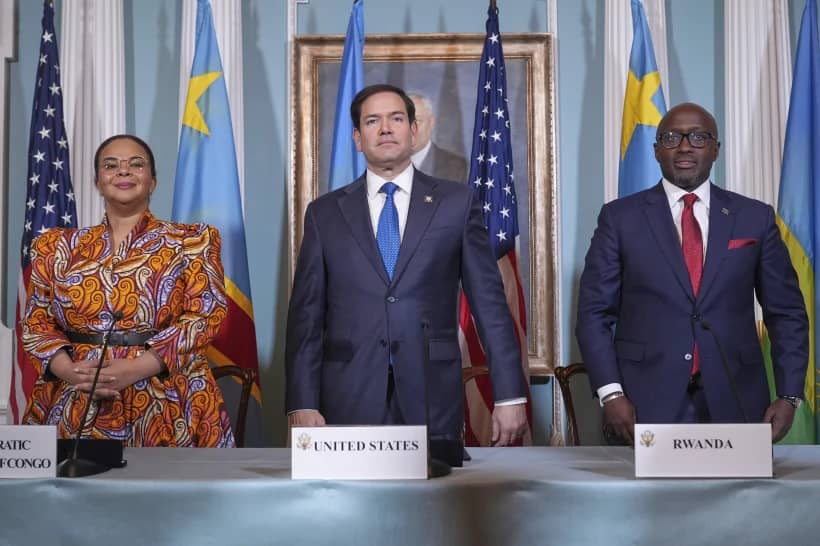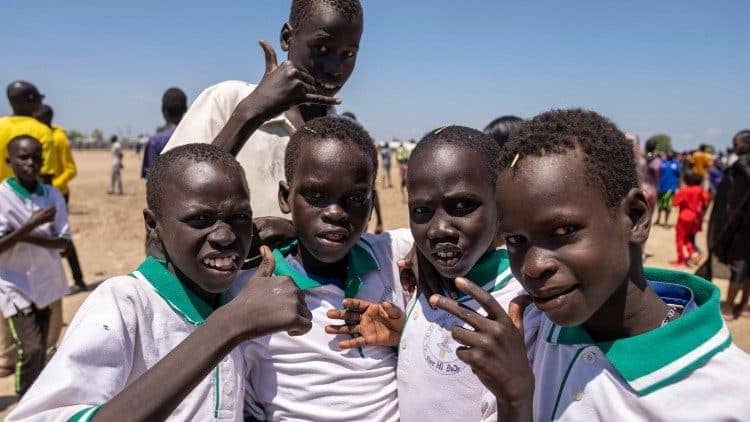YAOUNDÈ, Cameroon – After over 30 years of research, the world has finally found a vaccine against malaria.
Malaria is a parasitic disease transmitted by the Anopheles mosquito. It’s a major cause of illness and death, particularly in Sub Saharan Africa, killing approximately 400,000 people annually.
In early October, the World Health Organization endorsed widespread use of the vaccine called RTS, S—or Mosquirix – manufactured by GlaxoSmithKline.
While it’s a milestone, Catholic Relief Services says the limited effectiveness of the vaccine means other malaria preventive measures need to be maintained, including sleeping under insecticide-treated nets, early care, and ensuring that malaria patients adhere to the full course of malaria treatment.
It will be critical that all other malaria prevention activities are continued. Since this vaccine will only protect on average 1 out of every 3 children, children cannot afford to stop sleeping under a bed net, for example.
Suzanne Van Hulle, CRS global malaria advisor, noted the new malaria vaccine will only protect on average 1 out of every 3 children, and parents need to be made aware this is different than other childhood vaccines.
“This will be challenging since to date, the message that mothers received on other childhood vaccines was that if their child was fully vaccinated – 2 doses – against, for example measles, that their child would be free of measles or that the likelihood for their child to be infected with measles was extremely low. This won’t be the case with the malaria vaccine, and it will be critical to make that distinction so that communities don’t either lose trust in the effectiveness of all other childhood vaccines,” she said.
Following are excerpts of her interview with Crux.
Crux: When the news broke that a vaccine had been found against malaria, what was your very first reaction?
Van Hulle: CRS was aware that this news was forthcoming. We have been following the evolution of this vaccine especially over the last 5 years and with the results of the Phase III trial that came out in 2019. We were hoping that the vaccine would extend to children under the age of five, but the recommendation is for this vaccine to focus on saving the lives of children under the age of two – those most at risk of severe malaria and resulting death. While we were hoping for a higher efficacy of the vaccine, we are thrilled that WHO has come to a recommendation that this vaccine is safe and should be scaled up to children-eligible areas.
What does this mean, especially for children in Sub-Saharan Africa?
This means that the vaccine can potentially save the lives of tens of hundreds of children every year from malaria in sub-Saharan Africa. However, due to the low protective efficacy of this vaccine, it will be critical to ensure all other malaria preventive activities are maintained – such as sleeping under insecticide-treated nets, early care seeking once symptoms onset, ensuring that malaria patients adhere to the full course of malaria treatment, etc.
There are about a hundred different types of malaria parasites. Is this vaccine capable of addressing all of them?
While there are many types of malaria parasites, only 5 target human beings and can cause illness in humans. This vaccine targets one of those five called Plasmodium falciparum, which is the life-threatening type of malaria. Young children with severe Plasmodium falciparum malaria may develop liver and kidney failure, convulsions, and many unfortunately die. According to the WHO, in 2018, Plasmodium falciparum accounted for 99.7 percent of malaria cases in sub-Saharan Africa. This is why this vaccine could be life changing for many children, their families and entire communities on the African continent.
If you were to recommend a rollout strategy, where would you place emphasis?
On communication. It will be critical to emphasize or communicate two keys points to communities across the African continent.
It will be critical that all other malaria prevention activities are continued. Since this vaccine will only protect on average 1 out of every 3 children, children cannot afford to stop sleeping under a bed net, for example.
Related to the first point, communication will also have to be made clear that this malaria vaccine is different from all other childhood vaccines that have a protective efficacy of over 90 percent. This will be challenging since to date, the message that mothers received on other childhood vaccines was that if their child was fully vaccinated (2 doses) against, for example measles, that their child would be free of measles or that the likelihood for their child to be infected with measles was extremely low. This won’t be the case with the malaria vaccine, and it will be critical to make that distinction so that communities don’t either lose trust in the effectiveness of all other childhood vaccines.
So this vaccine is not the ultimate solution to the problem of malaria in Africa?
Unfortunately not. The goal of this vaccine is to reduce deaths from infants and young children. Vaccines targeting malaria elimination are still under development. This means that we need malaria vaccines that are over 90 percent effective to consider their potential impact on being able to eliminate malaria; but the RTS,S vaccine is definitely a step in the right direction.














